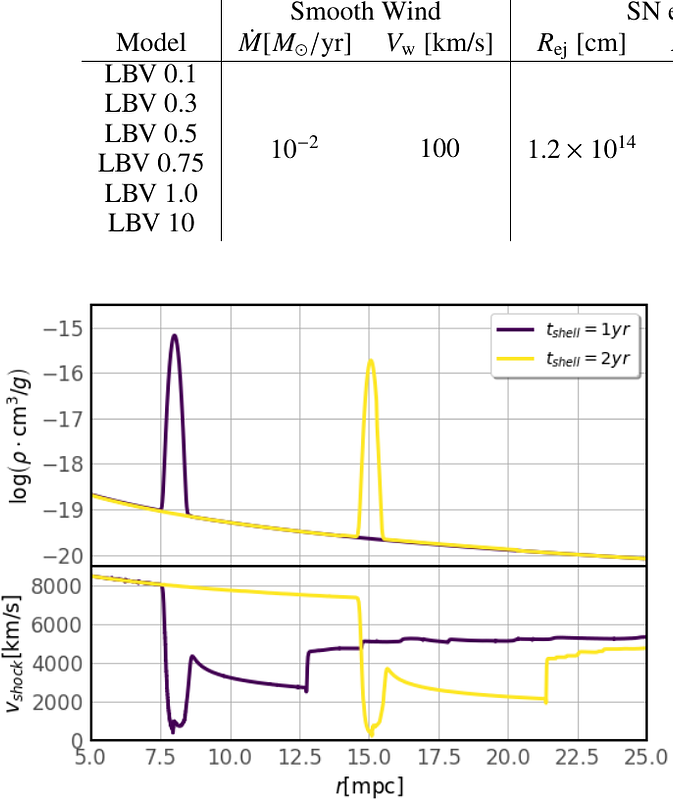How to turn a Supernova into a PeVatron

How to turn a Supernova into a PeVatron
Robert Brose, Iurii Sushch, Jonathan Mackey
AbstractContext. It is important to determine which Galactic cosmic-ray sources can accelerate particles to the knee of the cosmic ray spectrum at a few PeV, and in particular whether supernova remnants may contribute. Current models for particle acceleration in very young remnants assume the circumstellar material consists of smooth, freely expanding winds. There is strong evidence that some supernovae expand into much denser circumstellar material including dense shells ejected by eruptions shortly before explosion. Aims. We investigate the effects of dense circumstellar shells on particle acceleration in supernova shocks during the first few years post-explosion, to quantify whether such interaction supernovae may act as PeVatrons. Methods. We used the pion code to model the circumstellar medium around Luminous Blue Variables after having a brief episode with a mass-loss rate of up to dM/dt = 2Msol/yr. Consequently, we performed spherically symmetric 1-D simulations using our time-dependent acceleration-code RATPaC in which we simultaneously solve the transport equations for cosmic-rays, magnetic turbulence, and the hydrodynamical flow of the thermal plasma in the test-particle limit. Results. We find that the interaction with the circumstellar shells can significantly boost the maximum energy by enhancing particle escape during the onset of the shock-shell interaction followed by the reacceleration of the shock propagating into a medium with a pre-amplified field. Early interactions boost the maximum energy to a greater degree and interactions within the first 5 months after explosion can increase Emax to more then 1 PeV.